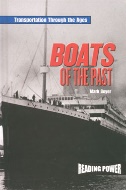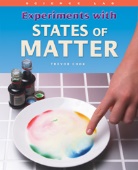-
 The detailed illustrations and photographs in this fascinating book take us into the complicated, hectic world of the beehive, where we observe the rigidly structured "class system" of the honeybee, with its worker bees, drones, and queen. The complex body and internal systems of the bee are examined, as the history, honey production, construction of the honeycomb, reproduction, and colony building are discussed.
The detailed illustrations and photographs in this fascinating book take us into the complicated, hectic world of the beehive, where we observe the rigidly structured "class system" of the honeybee, with its worker bees, drones, and queen. The complex body and internal systems of the bee are examined, as the history, honey production, construction of the honeycomb, reproduction, and colony building are discussed. -
 This is a well-organized look as coastal regions: what shapes them, some environmental threats, and their usefulness in industry and tourism. Several beautiful and interesting coastlines are highlighted, including Cancun and the Great Barrier Reef. Readers will learn about each coastline's location, population, local industries, and environmental threats.
This is a well-organized look as coastal regions: what shapes them, some environmental threats, and their usefulness in industry and tourism. Several beautiful and interesting coastlines are highlighted, including Cancun and the Great Barrier Reef. Readers will learn about each coastline's location, population, local industries, and environmental threats. -
 Some of the most important contributors to the food chain are those creatures that help break things down: decomposers. If not for these birds, bugs, and worms organic matter couldn't be recycled back into nature. Readers will discover the different kinds of decomposers, how they do their job, and why it is so important. This fascinating book includes graphic organizers and annotated illustrations to better explain the food chain.
Some of the most important contributors to the food chain are those creatures that help break things down: decomposers. If not for these birds, bugs, and worms organic matter couldn't be recycled back into nature. Readers will discover the different kinds of decomposers, how they do their job, and why it is so important. This fascinating book includes graphic organizers and annotated illustrations to better explain the food chain. -
 This book will give students an understanding of the history of flight right up to the technology and scientific discoveries that allow us to fly planes as large as todays super jumbo jets. How are airplanes designed so they can operate safely? What is the future of flight? All of these questions and more will be answered as students take a look at super jumbo jets, inside and out!
This book will give students an understanding of the history of flight right up to the technology and scientific discoveries that allow us to fly planes as large as todays super jumbo jets. How are airplanes designed so they can operate safely? What is the future of flight? All of these questions and more will be answered as students take a look at super jumbo jets, inside and out!
















































